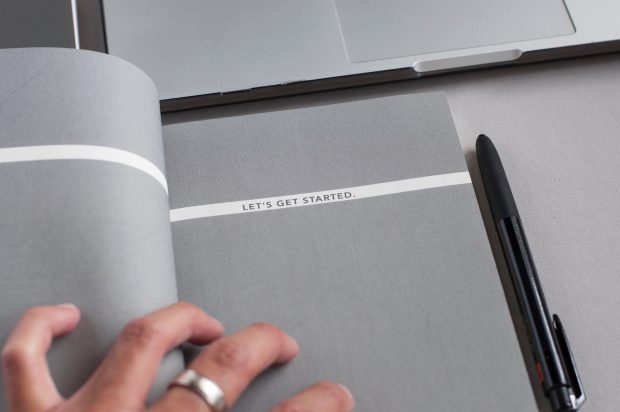 Have you officially decided you’re going to try to get more active? Congrats! Now that you’ve formed an intention, you can start getting strategic about how to incorporate more physical activity. The next series of posts are going to be dedicated to helping you form a kind of “toolkit”. We’re going to provide tangible and tactical advice to support you as you take charge of your physical activity behaviour.
Have you officially decided you’re going to try to get more active? Congrats! Now that you’ve formed an intention, you can start getting strategic about how to incorporate more physical activity. The next series of posts are going to be dedicated to helping you form a kind of “toolkit”. We’re going to provide tangible and tactical advice to support you as you take charge of your physical activity behaviour.
First, we want to review our journey thus far. We’ve talked about why physical activity is worth it, how to build confidence and create opportunities, as well as why and how to build a support system. We even touched on the intention-behaviour gap, which in essence indicates that intention is not enough and we need techniques to help with follow-through. This is where the “endeavour” layer of the M-PAC framework comes in. It’s all about setting yourself up for success by using self-regulation skills (which is a fancy way of saying the processes by which you manage challenges and setbacks and keep yourself on task).
 To help you build a strong foundation for your endeavouring, a great place to start is goal setting. While goal setting may not necessarily be a new or groundbreaking idea, it really is a fundamentally important place to start if you are trying to change a behaviour. This is because goals give us direction, allow us to gauge how much energy we need to devote to the task, provide a means for feedback and change, and ultimately help us perform. In short, they help organize us and get us going. Plus, it doesn’t hurt that we can expect to experience a healthy dose of pride and triumph when we meet said goals! Sounds pretty good, right? Hopefully you’re convinced, but if you need more persuading there is compelling evidence that goal setting does indeed have an effect on behaviour1-4.
To help you build a strong foundation for your endeavouring, a great place to start is goal setting. While goal setting may not necessarily be a new or groundbreaking idea, it really is a fundamentally important place to start if you are trying to change a behaviour. This is because goals give us direction, allow us to gauge how much energy we need to devote to the task, provide a means for feedback and change, and ultimately help us perform. In short, they help organize us and get us going. Plus, it doesn’t hurt that we can expect to experience a healthy dose of pride and triumph when we meet said goals! Sounds pretty good, right? Hopefully you’re convinced, but if you need more persuading there is compelling evidence that goal setting does indeed have an effect on behaviour1-4.
Let’s rewind and start with the conceptual basis of goal setting. Put simply, a goal is is an object or aim of an action and goal setting is the process whereby we decide what we want to accomplish and begin working towards that end. Research in the physical activity domain suggests that setting a goal – any goal – is effective for promoting physical activity, indicating that the process of goal setting is an extremely important factor for increasing physical activity5.
 But how do you set a “good” goal? Well for starters, goals should be specific and difficult (check out this SMART goal infograph for more tips!). This means that while you may have a broad overarching goal of “getting more active” or “going to the gym’, you’ll want to stay away from these types of vague goals. Instead, structure your goals so they are explicit and achievable, yet sufficiently challenging. For example, “my goal is to go to the gym on Tuesdays and Thursdays for 30 minutes” might be more suitable. Importantly, don’t set easy or tedious goals just for the sake of goal setting, because in the end they likely won’t work to motivate you. Finally, make sure that your goal is meaningful to you and aligned with an objective you truly value. Ideally you should be able to use your goals as an indicator of progress to see how far you’ve come and you should know when you’ve achieved your goal. Once you meet a few goals, you might just find you’re hooked!
But how do you set a “good” goal? Well for starters, goals should be specific and difficult (check out this SMART goal infograph for more tips!). This means that while you may have a broad overarching goal of “getting more active” or “going to the gym’, you’ll want to stay away from these types of vague goals. Instead, structure your goals so they are explicit and achievable, yet sufficiently challenging. For example, “my goal is to go to the gym on Tuesdays and Thursdays for 30 minutes” might be more suitable. Importantly, don’t set easy or tedious goals just for the sake of goal setting, because in the end they likely won’t work to motivate you. Finally, make sure that your goal is meaningful to you and aligned with an objective you truly value. Ideally you should be able to use your goals as an indicator of progress to see how far you’ve come and you should know when you’ve achieved your goal. Once you meet a few goals, you might just find you’re hooked!
In conclusion, setting stellar goals is a wonderful place to start your journey towards as active lifestyle. They will get you started, motivate you, and keep you working towards an aim2-4. Furthermore, they provide a great jumping off point for the strategies we will discuss in the future! Be sure to check back for more strategies to add to your toolbox for your journey towards a more active lifestyle.
*References/Further Reading
- Epton, T., Currie, S., & Armitage, C. (2017). Unique effects of setting goals on behavior change: Systematic review and meta-analysis. Journal of Consulting and Clinical Psychology, 85, 1182-1198.
- Locke, E. A., & Latham, G. P. (1990). A theory of goal setting performance. Englewood Cliffs, NJ: Prentice Hall.
- Locke, E. A., & Latham, G. P. (2002). Building a practically useful theory of goal setting and task motivation. American Psychologist, 57, 705-717.
- Locke, E. A., & Latham, G. P. (2006). New directions in goal setting theory. Current Directions in Psychological Science, 15, 265-268.
- McEwan, D., Harden, S. M., Zumbo, B. D., Sylvester, B. D., Kaulius, M., Ruissen, G. R., . . . Beauchamp, M. R. (2016). The effectiveness of multi-component goal setting interventions for changing physical activity behaviour: a systematic review and meta-analysis. Health Psychology Review, 10, 67-88.
- Rhodes, R.E.(2017). The evolving understanding of physical activity behavior: A multi-process action control approach. In A. J. Elliot (Ed), Advances in Motivation Science. (pp. 171-205).

